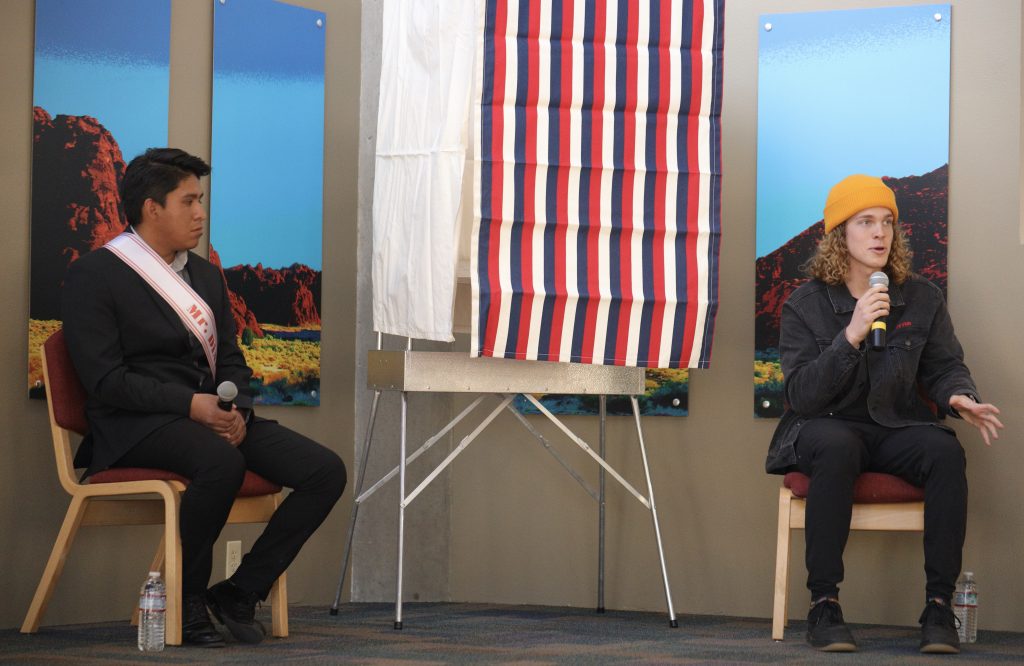While students have previously expressed a preference for in-person classes, they are increasingly using Zoom, and professors are rising to the occasion despite its challenges.
“I have found this platform the most challenging of any teaching platforms I have encountered,” said Rebecca Grondel, part-time psychology instructor. “It is extremely difficult to not have the ability to see the students you are teaching. Due to the way the classrooms are set up, when the instructor is away from the computer and presenting in front of the in-person students, they sacrifice face-to-face connection with the online students.”
Grondel said students have been accommodating in supporting her as she navigates unexpected failures and encourages participation, and it’s been interesting to create a new normal together, but she said things could be better.
“This platform would work much better if we were able to have two projectors with two screens in each room, enabling us to see the students online on the back wall while at the same time facing our in-class students,” Grondel said.
Sociology professor Robert Oxley, who has been teaching online-only classes and only using Zoom for individual meetings, said it’s up to each individual student how effective current teaching methods are.
“The responsible student will complete the prescribed reading assignments, written work, and participate in the discussions,” Oxley said. “Time management is the key for each student. It is even more important now because of the COVID-19 pandemic and compliance with the CDC guidelines. [The current format] is only as effective as each student individually determines what effort is necessary to read, write and study to obtain a full understanding of the presented course material.”
Oxley said using a weekly Zoom meeting in combination with an online course would be an effective method for students to receive some social interaction with their professor and fellow students. The one caveat is whether students will accept the responsibility to attend the Zoom meetings and do their work to the best of their ability.
“There are not any short cuts in the learning process,” Oxley said.
English professor Susan Ertel said her experience teaching on Zoom has been mostly positive.
“I am really trying to make the classes engaging and fulfilling, but there really is no substitute for in-person, face-to-face teaching,” Ertel said. “I don’t require students to turn on their cameras, and I have encouraged them to upload profile pictures so I am not staring at a black box with their name in it, and that has helped. If teaching on Zoom keeps me safe and keeps my students safe, I will do it again, but I would definitely prefer to be in the classroom.”
Grondel said she doesn’t blame students for retreating to Zoom because COVID-19 is a true threat and everyone needs to do their part to prevent its spread.
“I believe that the short term reality is that COVID-19 positive cases will continue to rise during the winter months,” Oxley said. “As a result, the option of having face-to-face courses during the spring term in 2021 is becoming less and less likely to happen.”



